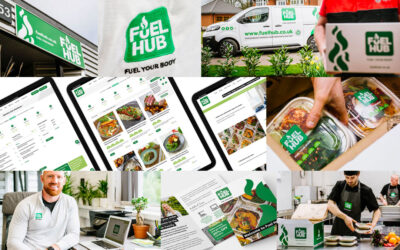In the age of digital communication, it’s easy to assume that brochures and printed marketing materials are dead. After all, many businesses have shifted their focus to online marketing strategies, and consumers seem to prefer interacting with brands through social media and email. However, despite these trends, brochures and other printed marketing materials still have a place in today’s world.
First and foremost, print marketing offers a tangible, physical experience that digital marketing simply can’t replicate. When a customer receives a brochure or a flyer in the mail, they can touch it, smell it, and hold it in their hands. This tactile experience can be incredibly powerful, and studies have shown that people tend to remember printed material more effectively than digital material.
In addition to the physical experience of print marketing, there are certain situations where print is simply more effective than digital. For example, if you’re trying to reach an older demographic, print marketing may be the best way to do so. While younger consumers are more likely to use social media and email, older consumers may prefer to receive information through the mail or in person.
Another advantage of print marketing is that it can be more targeted than digital marketing. With print marketing, you can send personalized messages directly to a specific audience. For example, if you’re targeting a specific region or demographic, you can send a direct mail piece that speaks directly to their needs and interests. This can be especially effective in the case of niche businesses or products.
Of course, print marketing does have its limitations. For one thing, it can be more expensive than digital marketing, both in terms of printing costs and distribution. Additionally, print marketing can be more difficult to track and measure than digital marketing. With digital marketing, you can easily track clicks, impressions, and conversions, which makes it easier to determine the effectiveness of your campaigns. With print marketing, it can be harder to tell how many people are actually engaging with your materials.
Despite these limitations, there are still many situations where print marketing can be an effective tool. For example, print marketing can be particularly useful for businesses that are trying to build brand recognition or establish themselves in a new market. A well-designed brochure or direct mail piece can help create a lasting impression and build trust with potential customers.

Overall, while digital marketing has certainly changed the landscape of marketing, print marketing is still alive and well. In fact, for many businesses, print marketing can be a valuable complement to digital marketing strategies. By using both digital and print marketing, businesses can create a comprehensive marketing plan that reaches customers through a variety of channels and maximises their chances of success.
Please take a look at my design and marketing services and get in touch if would like help or advice on printed marketing materials, including brochures, flyers, catalogues or direct mail pieces, for your business.
Sarah Evans, freelance graphic designer in Lancashire.


